Membrane-Active Peptides: Methods and Results on Structure and Function
$119.95
IUL Biotechnology Series, 9
by Miguel A.R.B. Castanho (Editor)
Edition: First
Book Details:
- Series: IUL Biotechnology Series
- Volume: 9
- Binding: Hardcover
- Pages: 562
- Dimensions (in inches): 9.75 x 6.50 x 1.75
- Publisher: International University Line
- Publication Date: March, 2010
- ISBN: 978-0-9720774-5-3
- Price: $119.95
MEMBRANE-ACTIVE PEPTIDES Methods and Results on Structure and Function edited by <>The world of membrane active peptides is fascinating. Lipid membranes are a challenge: at the molecular level they are neither bidimensional nor literally three-dimensional (3D) at the molecular scale; instead they are severely confined 3D systems. In contrast with the majority of “living chemistry,” the (bio)chemistry of lipid membrane core processes is hydrophobic; yet the lipid bilayers interfaces are polar, allowing a multitude of physical interfacial interactions. Moreover, multicomponent lipid systems may lead to lateral heterogeneity, turning membranes into patched surfaces, with different areas having different functionalities. At the same time, peptides are curious short-chain heteropolymers: while they may be plastic, the adopted conformations tend to be restricted to the typified tertiary structures; they may be amphiphilic and/or amphipathic, and their physical and chemical diversity is immense.
MIGUEL A. R. B. CASTANHO
Contents
Preface . . . . . vii
Acronyms and Abbreviations . . . . . xix
Contributors . . . . . xxiii
1. Introduction to the Theme: Seeking Clarity for Membrane-Active Peptides . . . . . 1
Robert E. W. Hancock
Acknowledgments . . . . . 7
References . . . . . 7
2. Membrane-Active Peptides: What after Babylon? . . . . . 11
Miguel A. R. B. Castanho
2.1. Whither Membrane-Active Peptides? . . . . . 13
2.1.1. Peptides in a Landscape . . . . . 15
2.1.2. Peptides as Protein-Domain Models . . . . . 15
2.1.3. The Clinical Edge . . . . . 16
2.1.4. Peptide Toxicology . . . . . 16
2.1.5. A Kingdom To Be United? . . . . . 21
2.2. Call for a New Discipline? . . . . . 21
Acknowledgments . . . . . 23
References . . . . . 23
3. Matrix Formalism for Sequence-Specific Biopolymer Binding to
Multicomponent Lipid Membranes . . . . . 29
Vladimir B. Teif, Daniel Harries, Dmitri Y. Lando, and Avinoam Ben-Shaulb
3.1. Introduction . . . . . 31
3.2. Biology of Membrane Binding . . . . . 32
3.3. Physics of Polymer-Membrane Binding . . . . . 33
3.4. The Transfer Matrix Method . . . . . 36
3.4.1. General Comments . . . . . 36
3.4.2. States Enumeration . . . . . 37
3.4.3. Bound Polymer Segments . . . . . 38
3.4.4. Electrostatic Corrections to the Binding Constants . . . . . 39
3.4.5. Entropy of Lipid Sequestration . . . . . 39
3.4.6. Loops and Tails . . . . . 41
3.4.7. Transfer Matrix Construction . . . . . 42
3.4.8. Calculating Binding Probabilities . . . . . 43
3.5. Constructing the Matrix Model for the MARCKS Protein . . . . . 45
3.5.1. Image Quality . . . . . 46
3.5.2. Types of Elementary Units . . . . . 46
3.5.3. Choosing Parameters . . . . . 47
3.6. Calculating MARCKS-Membrane Binding . . . . . 48
3.7. Potential Applications to More Complex Systems . . . . . 50
Acknowledgments . . . . . 50
References . . . . . 51
4. Prediction of Membrane-Contacting Protein Surfaces . . . . . 55
Igor F. Tsigelny, Yuriy Sharikov, Ross C. Walker, Jerry Greenberg,
Valentina Kouznetsova, Mark A. Miller, Eliezer Masliah
4.1. Amino Acid-Membrane Interaction . . . . . 57
4.2. Assessment of Membrane-Contacting Potential of Proteins . . . . . 65
4.2.1. Calculations of Membrane-Contacting Parameters for Amino Acids . . . . . 67
4.2.2. Binding-Free-Energy Calculations . . . . . 71
4.2.3. Membranephilic Plane Selection Calculations . . . . . 73
4.2.4. Predicted Membrane-Contacting Proteins and Membrane-Contacting Surfaces . . . . . 76
4.3. Concluding Notes . . . . . 80
References . . . . . 80
5. Langmuir Monolayers at the Liquid-Air Interface:
A Useful Tool to Study the Interaction of Membrane-Active Peptides
with Phospholipids . . . . . 83
Juan M. García-Ruiz
5.1. Introduction . . . . . 85
5.2. Experimental Techniques . . . . . 87
5.2.1. Circular Dichroism . . . . . 87
5.2.2. IR Reflection-Absorption Spectroscopy . . . . . 90
5.2.3. Grazing-Incidence X-Ray Diffraction . . . . . 96
3.2.4. Specular X-Ray Reflectivity . . . . . 100
3.2.5. Preparation of Lipid Vesicles . . . . . 102
3.2.6. Preparation of Lipid Monolayers at the Air-Buffer Interface . . . . . 103
5.3. Results . . . . . 103
5.3.1. NK-2 Structure in Aqueous Solutions . . . . . 103
5.3.2. NK-2 Adsorption at the AirLiquid Interface . . . . . 104
5.3.3. NK-2 Adsorption at Phospholipid Monolayers . . . . . 105
5.4. Summary . . . . . 110
References . . . . . 113
6. The Study of Biomolecular-Membrane Interactions Using
Surface Plasmon Resonance Spectroscopy . . . . . 119
Leonard Keith Pattenden, Henriette Mozsolits, and Marie-Isabel Aguilar
6.1. Introduction . . . . . 121
6.2. Surface Plasmon Resonance Spectroscopy . . . . . 123
6.3. Noncommercial Sensor Surfaces and Instruments . . . . . 124
6.4. Commercially Available Surfaces and SPR Instruments . . . . . 125
6.4.1. Modified Dextran-Based Surfaces . . . . . 125
6.4.2. Hybrid Bilayer Membrane Surfaces . . . . . 126
6.4.3. Experimental Protocols for Membrane Interaction Studies by SPR Spectroscopy . . . . . 126
6.4.4. Liposome Preparation . . . . . 127
6.4.5. Formation of Supported Lipid Monolayer (HBM) and Bilayer Systems . . . . . 128
6.4.6. Peptide Binding to the HPA-HBM and L1-Bilayer Systems . . . . . 129
6.4.7. Variation of Flow Rate . . . . . 131
6.4.8. HPA versus L1 Sensor Chip . . . . . 132
6.5. Theoretical Considerations . . . . . 135
6.5.1. Linearization Analysis . . . . . 136
6.5.2. Numerical Integration Analysis . . . . . 137
6.5.3. Steady-State Approximations . . . . . 139
6.5.4. A Case Study: Antimicrobial Peptides . . . . . 141
6.6. Conclusions . . . . . 144
References . . . . . 144
7. Laser Light Scattering Approach to Peptide-Membrane Interaction . . . . . 151
Marco M. Domingues and Nuno C. Santos
7.1. Introduction . . . . . 153
7.2. Static Light Scattering . . . . . 155
7.2.1. Sample Preparation . . . . . 159
7.3. Dynamic Light Scattering . . . . . 159
7.3.1. Sample Preparation . . . . . 163
7.4. ζ Potential . . . . . 164
7.4.1. Sample Preparation . . . . . 167
7.5. Applications . . . . . 167
7.6. Other Practical Aspects . . . . . 174
7.7. Conclusion . . . . . 175
Acknowledgments . . . . . 175
References . . . . . 176
8. Giant Unilamellar Vesicles, Fluorescence Microscopy and Lipid-Peptide Interactions . . . . . 179
Ernesto E. Ambroggio and Luis A. Bagatolli
8.1. Introduction . . . . . 181
8.2. Giant Unilamellar Vesicles . . . . . 183
8.2.1. Recent Updates in Protocols for GUV Formation . . . . . 184
8.2.2. Protocols to Generate GUVs . . . . . 185
8.3. Applications of GUVs in Lipid-Peptide Interaction Using Fluorescent-Microscopy-Related Techniques . . . . . 190
8.3.1. Pore Formation versus Membrane Solubilization . . . . . 190
8.3.2. The Importance of Choosing the Entrapped Fluorescent Probes: The Case of Carboxyfluorescein . . . . . 192
8.3.3. Membrane Translocation of Peptides . . . . . 193
8.3.4 Effect of Peptide Interaction on Membrane Lateral Structure . . . . . 193
8. Future Perspectives . . . . . 194
Acknowledgments . . . . . 194
References . . . . . 195
9. The Structural and Topological Analysis of Membrane Polypeptides
by Oriented Solid-State NMR Spectroscopy: Sample Preparation and Theory . . . . . 201
Burkhard Bechinger, Philippe Bertani, Sebastiaan Werten, Cléria Mendonça de Moraes, A. James Mason,
Christopher Aisenbrey, Barbara Perrone, Marc Prudhon, U. S. Sudheendra, and Verica Vidovic
9.1. Introduction . . . . . 203
9.2. Reconstitution of Membrane Polypeptides from Organic Solution . . . . . 205
9.3. Reconstitution of Membrane Polypeptides in Aqueous Environments . . . . . 209
9.4. Mechanically Orienting the Samples . . . . . 211
9.5. Oriented NMR Measurements: Experimental Considerations . . . . . 213
9.6. Orientation-Dependent Solid-State NMR Used for the Structural Analysis of Membrane Polypeptides . . . . . 214
9.7. Motional Averaging and Membrane Peptide Aggregation . . . . . 218
9.8. Example Spectra . . . . . 220
Acknowledgments . . . . . 222
References . . . . . 222
10. Peptide-Membrane Interactions Studied by Ellipsometry, Laser Scanning Microscopy,
and Z-Scan Fluorescence Correlation Spectroscopy . . . . . 227
Adam Miszta, Radek Machan, Wim Th. Hermens, and Martin Hof
10.1. Introduction . . . . . 229
10.1.1. Antimicrobial Peptides . . . . . 230
10.1.2. Supported Phospholipid Model Membranes . . . . . 231
10.2. Experimental Techniques . . . . . 232
10.2.1. Basic Principles of Ellipsometry . . . . . 232
10.2.2. Basic Principles of Z-Scan Fluorescence Microscopy . . . . . 236
10.3. Results-Interaction of Cryptdin-4 and Magainin 2 with Negatively Charged Bilayers . . . . . 243
10.4. Summary . . . . . 247
Acknowledgments . . . . . 248
References . . . . . 248
11. Quantification and Proteolytic Analysis of Cell-Penetrating Peptides
and Cargo in Eukaryote Cells . . . . . 257
Sandrine Sagan, Diane Delaroche, Baptiste Aussedat, Soline Aubry, Gérard Bolbach, Isabel D. Alves,
Solange Lavielle, Gérard Chassaing, and Fabienne Burlina
11.1. Introduction . . . . . 259
11.2. General Protocol Outline . . . . . 262
11.2.1. Peptide Design . . . . . 263
11.2.2. Key Steps for the Accuracy of the Method . . . . . 267
11.3. Quantification of Cell-Penetrating Peptides and Pseudopeptides . . . . . 270
11.4. Kinetics of Uptake and Metabolism of CPP in CHO Cells . . . . . 272
11.5. Cargo Internalization Quantification . . . . . 273
11.6. Cytotoxicity of Cell-Penetrating Peptides . . . . . 274
11.7. Toward the Mechanism of Entry? . . . . . 274
Acknowledgments . . . . . 275
References . . . . . 275
12. Planar Lipid Bilayers for Electrophysiology of Membrane-Active Peptides . . . . . 281
Fabrice Homblé, Lamia Mlayeh, and Marc Léonetti
12.1. Introduction . . . . . 283
12.2. Basic Electrical Properties of a Planar Lipid Bilayer . . . . . 287
12.2.1. Membrane Potential . . . . . 288
12.2.2. Membrane Current . . . . . 288
12.2.3. Membrane Capacitance . . . . . 289
12.2.4. Membrane Conductance . . . . . 290
12.3. Recording Equipment . . . . . 291
12.3.1. The Faraday Cage . . . . . 292
12.3.2. Antivibration Platform . . . . . 293
12.3.3. Electrodes . . . . . 293
12.3.4. Preparation of Ag-AgCl Electrodes . . . . . 293
12.3.5. Preparation of Salt Bridges . . . . . 294
12.4. Experimental Solutions . . . . . 296
12.4.1. Aqueous Solutions . . . . . 296
12.4.2. Lipid Solutions . . . . . 296
12.5. Formation of a Planar Lipid Bilayer . . . . . 297
12.5.1. Painted Planar Lipid Bilayers . . . . . 297
12.5.2. Folded Planar Lipid Bilayers . . . . . 298
12.5.3. Membrane Thickness . . . . . 299
12.5.4. Membrane Conductance . . . . . 300
12.5.5. Painted versus Folded Bilayer . . . . . 302
12.5.6. Artifacts . . . . . 303
12.6. Concept of Membrane Potential . . . . . 304
12.6.1. Dipole Potential . . . . . 307
12.6.2. Surface Potential Difference . . . . . 310
12.7. Conclusions . . . . . 310
References . . . . . 250
13. Atomic Force Microscopy Studies of Peptide-Membrane Interactions . . . . . 321
Yves F. Dufrêne
13.1. Introduction . . . . . 323
13.2. Methodology . . . . . 325
13.2.1. Preparing Supported Lipid Films . . . . . 325
13.2.2. Atomic Force Microscopy Methodology . . . . . 329
13.3. Applications . . . . . 331
13.3.1. Imaging Supported Lipid Membranes . . . . . 331
13.3.2. Real-Time Imaging of Peptide-Membrane Interactions . . . . . 334
Acknowledgments . . . . . 337
References . . . . . 338
14. Cell-Penetrating Peptides-Uptake, Toxicity, and Applications . . . . . 341
Gisela Tünnemann and M. Cristina Cardoso
14.1. Introduction-Bits and Pieces of CPP History . . . . . 343
14.2. Influence of Cargo on Mode of Uptake . . . . . 345
14.2.1. Affinity Tags and Protease Removal Sites . . . . . 346
14.2.2. Low-Molecular-Weight Cargoes . . . . . 346
14.2.3. Special Role of Arginine-Rich Peptides in Cellular Uptake . . . . . 348
14.2.4. Relevant Parameters when Measuring CPP Uptake . . . . . 349
14.3. Models for the Mechanism of Transduction . . . . . 350
14.3.1. Pore Formation . . . . . 350
14.3.2. Formation of Inverted Micelles . . . . . 350
14.3.3. Adaptive Translocation . . . . . 352
14.4. Toxicity of Cell-Penetrating Peptides . . . . . 354
14.4.1. In Vitro . . . . . 354
14.4.2. In Vivo . . . . . 355
14.5. CPP-Mediated Intracellular Delivery in Molecular Medicine Applications . . . . . 356
14.5.1. Labeling and Imaging . . . . . 356
14.5.2. Modulation of Intracellular Function . . . . . 357
14.6. Conclusions and Perspectives . . . . . 360
Acknowledgments . . . . . 363
References . . . . . 363
15. Cell-Penetrating Peptides: Trojan Horse for Macromolecule Delivery in Plant Cells . . . . . 373
Archana Chugh and François Eudes
15.1. Introduction . . . . . 375
15.2. Uptake of CPPs in Plants . . . . . 377
15.2.1. Preparation of Plant Cells and Tissues . . . . . 377
15.3. Translocation of Fluoresceinated CPPs in Plant Cells . . . . . 380
15.3.1. Protoplasts . . . . . 380
15.3.2. Microspores . . . . . 380
15.3.3. Zygotic Embryos . . . . . 381
15.3.4. Leaf Bases and Root Tips . . . . . 381
15.3.5. Fluorescence and Fluorimetric Analysis . . . . . 382
15.4. Delivery of CPP-Driven Macromolecular Cargo Complexes in Plant Cells and Tissues . . . . . 383
15.4.1. Noncovalent Protein Transduction in Plant Cells . . . . . 383
15.4.2. Transfection of Plant Cells and Tissues with CPP-Plasmid DNA Complex . . . . . 385
15.5. Effect of Endocytic and Macropinocytic Inhibitors . . . . . 387
15.6. FDA Staining Test for Plant Cell Viability . . . . . 388
References . . . . . 388
16. Biophysics and the Way Out of the Endosomal versus Non-Endosomal Dilemma
for Cell-Penetrating Peptide Pep-1 . . . . . 393
Sónia Troeira Henriques
16.1. Introduction . . . . . 395
16.1.1. Strategies To Introduce Macromolecules into Cells . . . . . 395
16.1.2. Peptides as Vectors . . . . . 397
16.1.3. How Do CPPs Translocate across Cell Membranes? . . . . . 399
16.1.4. Pep-1: A New Peptide Carrier . . . . . 401
16.2. Insights in the Translocation Mechanism of Pep-1 . . . . . 401
16.2.1. Pep-1 Aggregates in Aqueous Environment . . . . . 402
16.2.2. Pep-1 Has a High Affinity for Lipidic Membranes . . . . . 403
16.2.3. Pep-1 Modulates Membrane Stability but Does Not Form Pores . . . . . 406
16.2.4. Pep-1 Translocates across Llipidic Membranes by a Mechanism Promoted by
Transmembrane Potential . . . . . 408
16.2.5. Pep-1 Translocation into Mammalian Cells Occurs by a Mechanism Modulated by
Transmembrane Potential . . . . . 409
16.2.6. Overall Mechanism: Importance of Lipidic Membrane and Electrostatic Interaction on
Pep-1 Uptake . . . . . 411
16.3. Toward a New Phase Regarding CPP Mechanisms: The Co-existence of Translocation Mechanisms . . . . . 414
References . . . . . 418
17. Structure and Activities of Antimicrobial Peptides at the Bacterial Membrane . . . . . 427
Francesca Morgera, Lisa Vaccari, Luisa Creatti Nikolinka Antcheva, and Alessandro Tossi
17.1. Introduction . . . . . 429
17.2. Spectroscopic Techniques Applied to AMP-Model Membrane Systems-a Valuable Tool for
Molecular Biophysics Studies . . . . . 431
17.2.1. Model Membranes as a Tool for Probing Peptide Structural Variations . . . . . 431
17.2.2. Circular Dichroism Applied to Peptide-Membrane Interactions . . . . . 435
17.2.3. FTIR Spectroscopy Applied to Peptide Structure Characterization in Solution and
Inserted into Membranes . . . . . 437
17.3. CD and FTIR Spectroscopy for AMP Structural Investigations: Methods and Results . . . . . 442
17.3.1. CD Methods and Results . . . . . 449
17.3.2. Transmission and FTIR Measurements on Peptides in Solution . . . . . 453
17.3.3. ATR-FTIR on Peptide Inserted in Model Membranes . . . . . 454
17.4. Activities of AMPs: Liposome and Bacterial Cell Permeabilization Assays . . . . . 457
17.4.1. Dye Release from Preloaded Liposomes . . . . . 457
17.4.2. Permeabilization of Bacterial Cells by Means of Flow Cytometric and
Classical Fluorimetric Methods . . . . . 460
Acknowledgments . . . . . 466
References . . . . . 467
18. Membranotropic Regions of Membrane-Fusion Proteins:
The Use of Peptide Libraries . . . . . 473
Ana J. Pérez-Berná, Jaime Guillén, Miguel R. Moreno, and José Villalaín
18.1. Introduction . . . . . 475
18.2. The “Dry Toolbox”: Is It Possible To Deduce the Membranotropic Segments
of a Protein from Its Sequence? . . . . . 478
18.3. The “Damp Toolbox”: Can We Reproduce the “Dry Toolbox” Results? . . . . . 480
18.4. Peptide Interaction with the Membrane: Binding, Location and Modulation of
the Membrane Phase Structure . . . . . 485
18.5. Modulation of Peptide Structure by Membrane Binding . . . . . 494
References . . . . . 498
19. NMR to Access the Transient Interactions between Viral Fusion Peptides
and Their Target Membranes . . . . . 505
Andrea T. Da Poian, Fabio C. Almeida, Ana Paula Valente, Ronaldo Mohana-Borges, and Francisco Gomes Neto
19.1. Introduction . . . . . 507
19.2. Virus-Induced Membrane Fusion . . . . . 509
19.3. Viral Fusion Proteins and Fusion Peptides . . . . . 510
19.4. Experimental Requirements . . . . . 511
19.4.1. Structural Calculation . . . . . 512
19.5. The Case of an Antimicrobial Peptide, PW2 . . . . . 514
19.6. Dynamics of Viral Fusion Peptides-Membrane Interaction Studied by NMR . . . . . 515
19.6.1. Vesicular Stomatitis Virus . . . . . 515
19.6.2. Ebola Virus . . . . . 520
References . . . . . 522
20. HIV-1 Fusion Inhibitor Peptides: A Cross Correlation between
Efficacy and Membrane-Level Activity . . . . . 527
Ana Salomé Veiga and Henri G. Franquelim
20.1. Introduction . . . . . 529
20.2. Methods and Results . . . . . 532
20.2.1. Photophysical Characterization . . . . . 532
20.2.2. Partition Coefficient Determination . . . . . 533
20.2.3. The Interaction of T-20 and T-1249 with Cholesterol-Containing Membranes . . . . . 537
20.2.4. Interaction of T-1249 with Cholesterol-Rich Areas Vesicles. A FRET Study . . . . . 544
20.2.5. Quenching Experiments To Evaluate the Partition Patterns of Sifuvirtide . . . . . 548
20.2.6. Adsorption of Sifuvirtide on DPPC Gel-Phase Membranes Confirmed by FRET . . . . . 548
20.2.7. In-Depth Location of the Peptides in Membranes . . . . . 550
20.2.8. T-20 and T-1249 Secondary-Structure Studies . . . . . 553
20.3. Conclusions—New Trends in HIV Fusion Inhibition by Peptides . . . . . 556
References . . . . . 403
21. Induced Perturbations and Adopted Conformations in Membranes
by the HIV-1 Fusion Peptide . . . . . 565
José L. Nieva, Nerea Huarte, Shlomo Nir, and David Weliky
21.1. Introduction . . . . . 567
21.2. FP-Induced Membrane Perturbations: Leakage and Fusion . . . . . 570
21.2.1. Leakage and Pore Formation in POPG Vesicles . . . . . 572
21.2.2. Induction of Fusion of Cholesterol-Containing Liposomes . . . . . 578
21.3. Structural Characterization by Low-Resolution Techniques . . . . . 580
21.4. Structural Characterization by High-Resolution NMR Techniques . . . . . 584
21.4.1. Background and Sample Preparation . . . . . 584
21.4.2. HFP in Detergent Micelles . . . . . 586
21.4.3. HFP Conformation in Membranes . . . . . 586
21.4.4. IHFP Tertiary Structure . . . . . 587
21.4.5. Membrane Location of HFP . . . . . 588
21.4.6. Membrane Insertion Angle of HFP . . . . . 589
21.4.7. Correlation of Structural Results with Fusion Activity . . . . . 590
21.4.8. Future Studies . . . . . 590
References . . . . . 591
22. Membrane Binding of Cyclotides . . . . . 597
Conan K. Wang, Yen-Hua Huang, Kathryn Greenwood, and David J. Craik
22.1. Background . . . . . 599
22.2. Surface Plasmon Resonance Studies . . . . . 603
22.2.1. Liposome Preparation . . . . . 603
22.2.2. Formation of Lipid-Bilayer Membranes . . . . . 604
22.2.3. Cyclotide Binding to the Bilayer Membrane . . . . . 605
22.3. NMR Studies . . . . . 606
22.3.1. Binding of Kalata B1 to DPC Micelles . . . . . 607
22.3.2. IStructure and Orientation of Micelle-Bound Kalata B1 . . . . . 611
22.3.3. Divalent Cation-Binding Site in Micelle-Bound Kalata B1 . . . . . 612
22.4. Functional Pores in Membranes . . . . . 613
22.4.1. Lipid Systems for the Investigation of Membrane-Cyclotide Interactions . . . . . 614
22.4.2. Vesicle Preparation . . . . . 615
22.4.3. Dye Leakage Experiments . . . . . 616
22.4.4. Electrophysiological Recording . . . . . 618
22.4.5. Preparation of Liposomes . . . . . 619
22.4.6. Patch Clamping . . . . . 620
22.5. Cell-Based Studies of Cyclotides . . . . . 621
22.5.1. Hemolytic Properties . . . . . 622
22.5.2. Mammalian Cell Membrane Interaction . . . . . 623
22.6. Summary . . . . . 627
References . . . . . 628
23. Time-Resolved Fluorescence Methodologies in the Study of
Lipid-Peptide Interaction . . . . . 673
Luís M. S. Loura and Manuel Prieto
23.1. Introduction . . . . . 675
23.2. Time-Resolved versus Steady-State Fluorescence Spectroscopy . . . . . 677
23.3. Instrumentation . . . . . 679
23.4. Data Analysis . . . . . 681
23.5. Methodologies and Results in Time-Resolved Fluorescence of Lipid-Peptide Systems . . . . . 688
23.5.1. Lifetimes . . . . . 688
23.5.2. Anisotropy . . . . . 689
23.5.3. Quenching . . . . . 692
23.3.4. Förster Resonance Energy Transfer . . . . . 697
23.6. Conclusions . . . . . 702
Acknowledgments . . . . . 703
References . . . . . 703
Index . . . . . 707
Preface
When peptides and lipids meet, they often associate and affect each other. In the most severe cases, peptides disrupt the lipid bilayers. In the most intriguing ones, peptides translocate across bilayers but leave them intact.
In any case, the scientist is confronted with the foundations of phenomena of the utmost importance to natural sciences: antimicrobial drugs innate to man, viral fusion and assembly, gene transfection and receptor-ligand interactions, to name a few.
This book reflects the richness the field it is devoted to: membrane active peptides, from structural to functional studies: Here one can find the work of prominent groups using a vast array of different samples and different tools, from theoretical work in silico to spectroscopic work in cells.
My challenge to the reader is to go through the book not thinking of membrane-active peptides as divided in strict families. To not think of viral, cell penetrating, and antimicrobial peptides as different entities. They are all membrane-active peptides and share more properties than one wonders at first sight. Their separation in different families is quite artificial. This book goes through generalist methodologies, such as in silico analysis and predictions, fluorescence and NMR spectroscopies, ellipsometry, surface plasmon resonance, electrophysiology, and FTIR, among others, and different samples, from artificial membranes (Langmuir monolayers, vesicles, planar lipid bilayers, supported bilayers…) to both animal and plant cells, to address pertinent topics as the detection of membrane-active segments in proteins, extent of uptake of peptides by lipid bilayers, in-depth location of peptides in lipid membranes, orientation relative to the lipids, aggregation, membrane permeabilization and membrane fusion, and the interplay between lipid heterogeneity and peptide uptake. In the end, the reader will learn about membrane-active peptides as a whole, their basic mechanisms and their impact on biotechnology, health and disease.
I am grateful to all authors for their active collaboration and commitment on this endeavour. Their expertise and educated insight on each subject turned this book into a timely tool and source of information for researchers and educators on peptide science and/or cell membrane structure and function. I thank them all and am certain that the reader will enjoy and benefit from their work. Thank you also to Manuel Melo for drawing the cover figure.
In the end I cannot help thinking of my own family and the families and friends of the authors for the attention they did not receive in the extra-hours of work dedicated to this book.
Miguel A. R. B. Castanho
Lisbon, Portugal



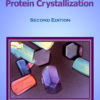
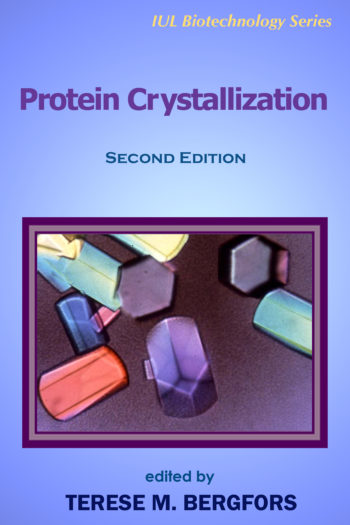
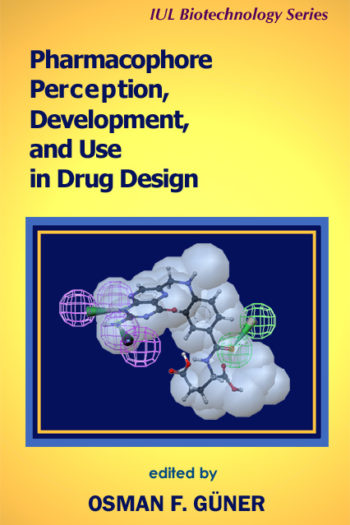
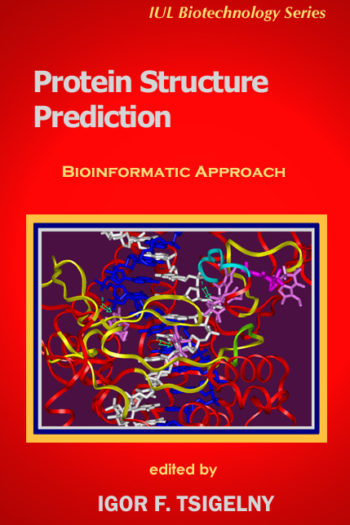
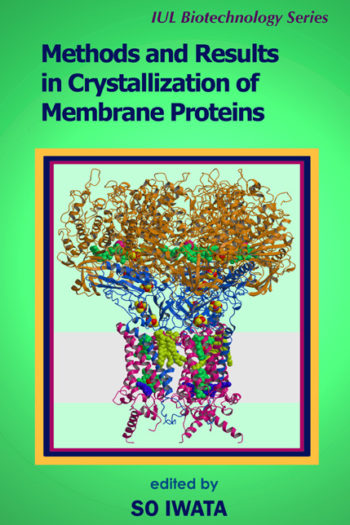

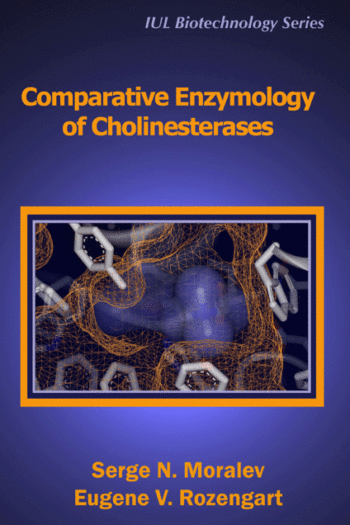

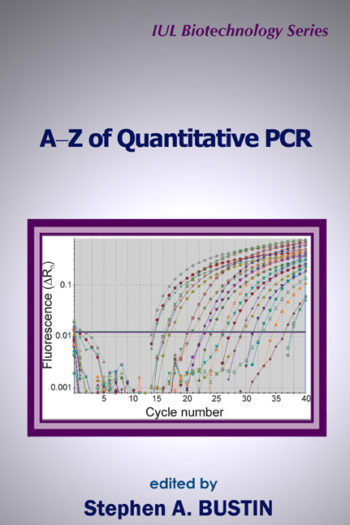
David Andreu –
Scientific Affairs Officer of the European Peptide Society, Professor of Chemistry, Universitat Pompeu Fabra, Barcelona, Spain
A timely, comprehensive, authoritative survey of the ever-expanding world of membrane-active peptides, this book will be of interest not only for experts in the various fields (biochemistry, biophysics, microbiology, and therapeutics) where peptides meet membranes, but for a more general reader looking for a reliable introduction to this exciting area. A well-known leader in the field, Prof. Castanho has assembled a distinguished team of specialists who cover practically all aspects of the subject, at both theoretical and experimental levels, with strong emphasis on antimicrobial and cell-penetrating peptides. Carefully written and edited, this volume is likely to become a unique reference on membrane-active peptides for many years to come.